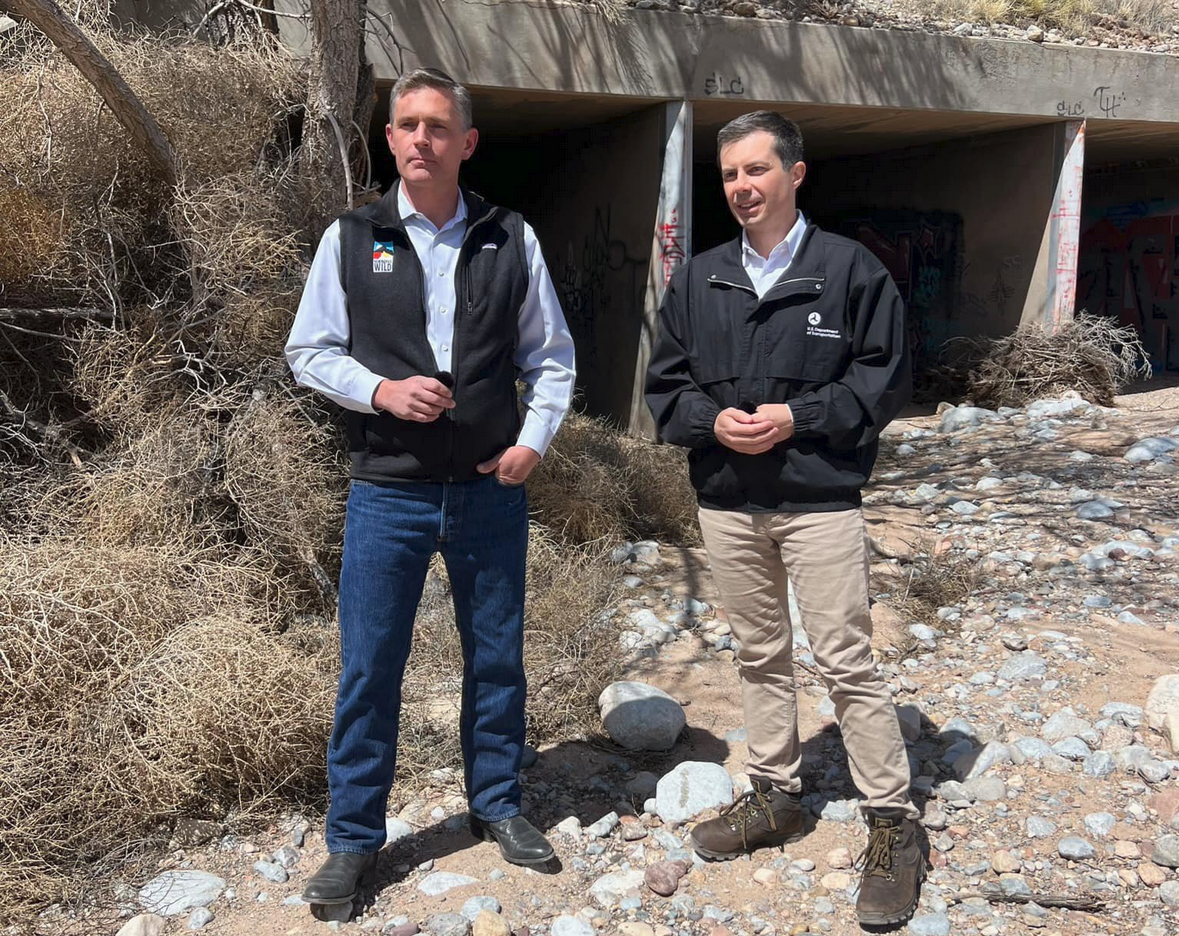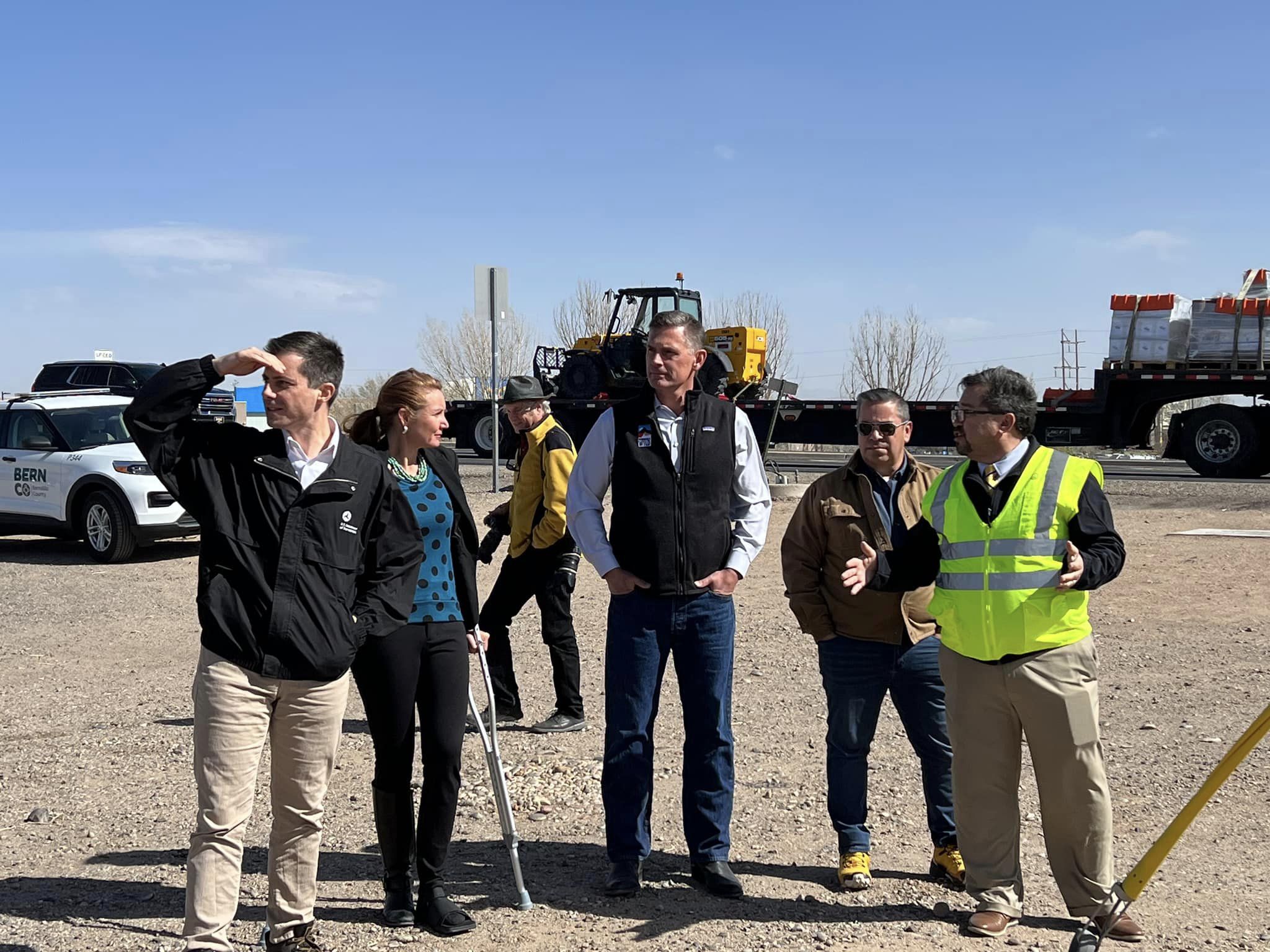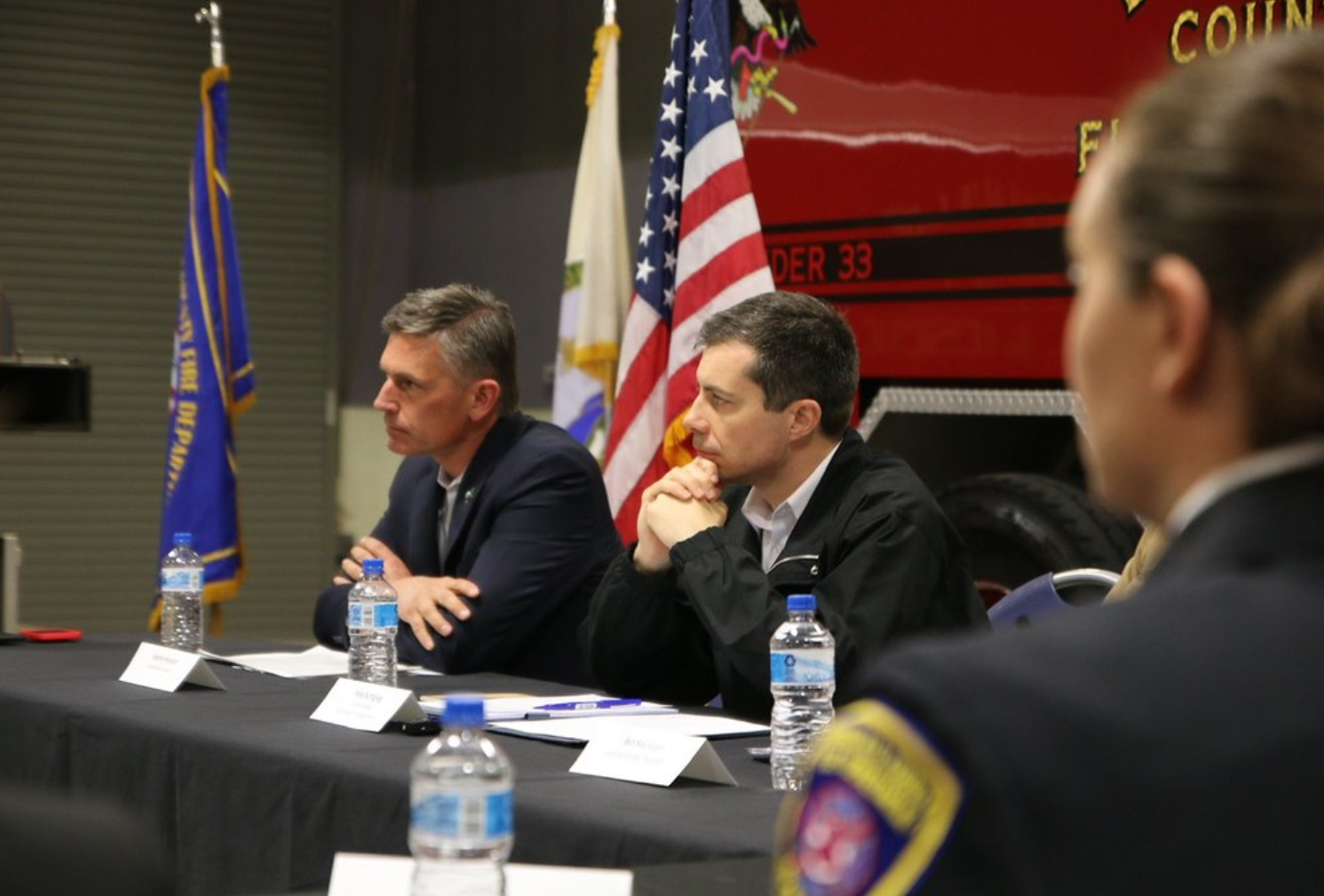Safer roads save lives
Dear Friend,
Yesterday, I joined U.S. Secretary of Transportation Pete Buttigieg in New Mexico to highlight infrastructure investments that the Biden-Harris Administration is delivering to our state to improve the safety of our roads, reduce crashes, and save lives.
We started out by bringing more attention to a critical area of road safety: wildlife-vehicle collisions. There are more than a million vehicle collisions with large animals across our nation each year. Every year, we lose 200 Americans to these collisions. And tens of thousands more lead to serious injuries. In New Mexico, the state Department of Transportation has recorded more than 3,000 collisions involving deer and elk over just one ten-year period.
PHOTO: U.S. Senator Martin Heinrich and U.S. Secretary Pete Buttigieg visit a culvert in Santa Ana Pueblo that passes under I-25 and provides animals with a safe passage under the highway, April 4, 2023.
Secretary Buttigieg and I visited a culvert under a busy stretch of I-25 for drivers commuting between Albuquerque and Santa Fe. This is also the middle of a very busy wildlife corridor between the Sandias and the Jemez. The Pueblo of Santa Ana has installed cameras in this culvert that have seen animals use this safer way to get under—rather than through—all the lanes of traffic on the Interstate.
Building overpasses and underpasses specifically designed to give animals a safe place to cross busy highways has proven to be an effective way to reduce dangerous vehicle-wildlife collisions. That’s why I worked to establish a first-of-its-kind $350 million Wildlife Crossings Pilot Program that the Biden-Harris Administration is implementing now as part of the Bipartisan Infrastructure Law.
PHOTO: (From left) U.S. Secretary Pete Buttigieg, U.S. Representative Melanie Stansbury, U.S. Senator Martin Heinrich and U.S. Senator Ben Ray Luján visit a section of Coors Boulevard in the South Valley, where a $6.3 million Safer Streets for All grant from the U.S. Department of Transportation will help Bernalillo County improve pedestrian safety, April 4, 2023.
In our next stop, Secretary Buttigieg and I visited a section of Coors Boulevard between Blake and Gun Club Road in Albuquerque’s South Valley. In recent years, far too many New Mexicans have lost loved ones in deadly vehicle-pedestrian collisions along this very stretch of road, which is near a number of schools, residential neighborhoods, and a shopping center.
New Mexico has the highest rate of pedestrian-vehicle fatalities in the entire nation. These pedestrian fatalities are not numbers. They are people. Brothers, cousins, grandparents, neighbors. We cannot bring back the New Mexicans we have already lost. But we can deliver resources to make our roads much safer moving forward.
Through its Safe Streets for All initiative, and with funding from the Bipartisan Infrastructure Law, the U.S. Department of Transportation recently awarded $6.3 million to Bernalillo County to improve this busy stretch of Coors - to add wider pedestrian paths and protected bike lanes and create safer traffic patterns.
PHOTO: U.S. Senator Martin Heinrich and U.S. Secretary of Transportation Pete Buttigieg meet with first responders at Bernalillo County Fire Department Station 33, April 4, 2023.
During our visit, Secretary Buttigieg and I also sat down with first responders at a fire station to hear their firsthand accounts of fatal pedestrian collisions. We heard from a student from nearby Atrisco Heritage High School about what it will mean to have a safer walk to school. And we got a briefing from Dr. Nicholas Ferenchak, an assistant professor at the University of New Mexico, who is leading a new Center for Pedestrian and Bicyclist Safety that was made possible thanks to a $10 million grant from the U.S. Department of Transportation.
We know that we need to improve the safety of our roads to protect drivers and pedestrians and prevent future tragedies. Secretary Buttigieg has made it his mission to save lives on our roadways with an ultimate goal of zero fatalities. To make this possible – and to save lives in our communities – we need to invest in proven and evidence-based solutions.
Sincerely,


